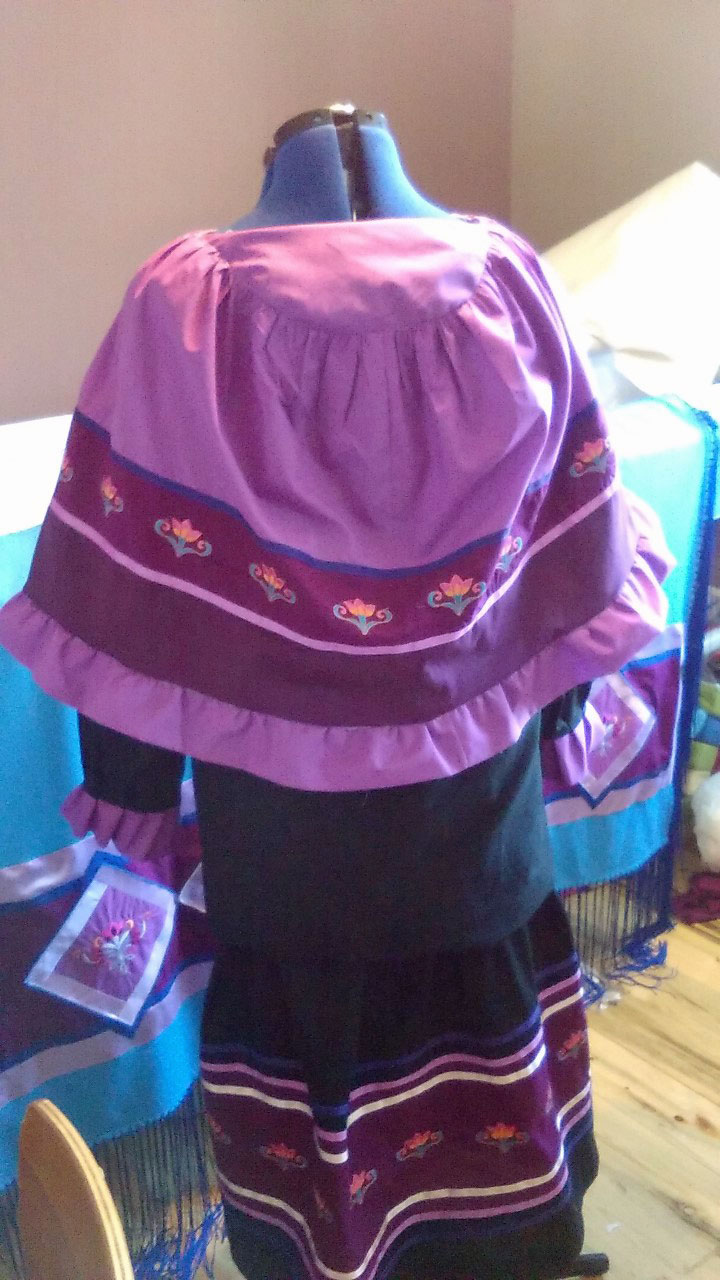Below is a Q&A with Alistair Bane about the work he did as a Native Arts Artist-in-Residence at the Denver Art Museum in July 2016.
Art is healing; it inspires confidence in oneself.
Below is a Q&A with Alistair Bane about the work he did as a Native Arts Artist-in-Residence at the Denver Art Museum in July 2016.
Cassidy Schultz: What genre of dance is your piece connected to and what’s your relationship/history to it?
Alistair Bane: The men’s straight dance, which is a Southern Plains dance. My tribe is Shawnee, but we moved to Oklahoma and learned dances from the Southern Plains tribes. I started dancing in my 30s.
CS: What role does your piece play in the type of dance it’s for/connected with?
AB: I will make a full dance set, but every part of the set for Southern Straight Dance has purpose, is integral to the meaning of the dance itself. There’s a template of sorts for Southern Straight, but the colors and patterns really speak to the personality of the dancer.
CS: What drew you to this form of art?
AB: First, I learned to dance then I made my own set. I love learning and I’ve had teachers from various tribes who have given me the tools and techniques for each part of a set. My work is Shawnee but I’ve learned from so many different people.
CS: What can visitors expect during your time at the DAM?
AB: I will be creating ribbon work and the apron for a Men’s Straight Dance set, the rest of which I plan to finish by September. I’m very excited to have a studio space where I can connect and share with people.
CS: What’s one thing you’d like to tell people about your art?
AB: Art is healing; it inspires confidence in oneself. Whatever you feel or think when you’re creating, you stitch that into the work. Our art is tied to how we should live a native people, as an artist I want to bring something positive to our people.
CS: Is there a part of your work that is particularly meaningful to you?
AB: One of the most appealing parts of Native art, for me, is the technical challenge. There is a kind of devotion in detailed work and working on someone’s dancewear is looking out for their well-being.
CS: Would you tell us about your creative process?
AB: The ribbon work is cut-and-fold layers, which I sew together by machine. The patterns are from my tribe.
CS: What inspires/motivates you?
AB: The positivity that I can bring–for myself and my people–through my art and dance. My father inspires me as well and he supported my art from an early age.
CS: How did you learn to create this kind of art? Was it passed down or did you learn on your own?
AB: When someone begins dancing there is a big dinner and the community provides their new dancewear, but I didn’t have that. I had to make my own dance set. I reached out to artists I admired, offered to help in their work and they taught me their technique. My teachers were from outside my tribe so I did research in the Smithsonian Institution to find old Shawnee pieces and patterns; it was sort of reverse engineering, learning the art first and then finding my inspiration.


